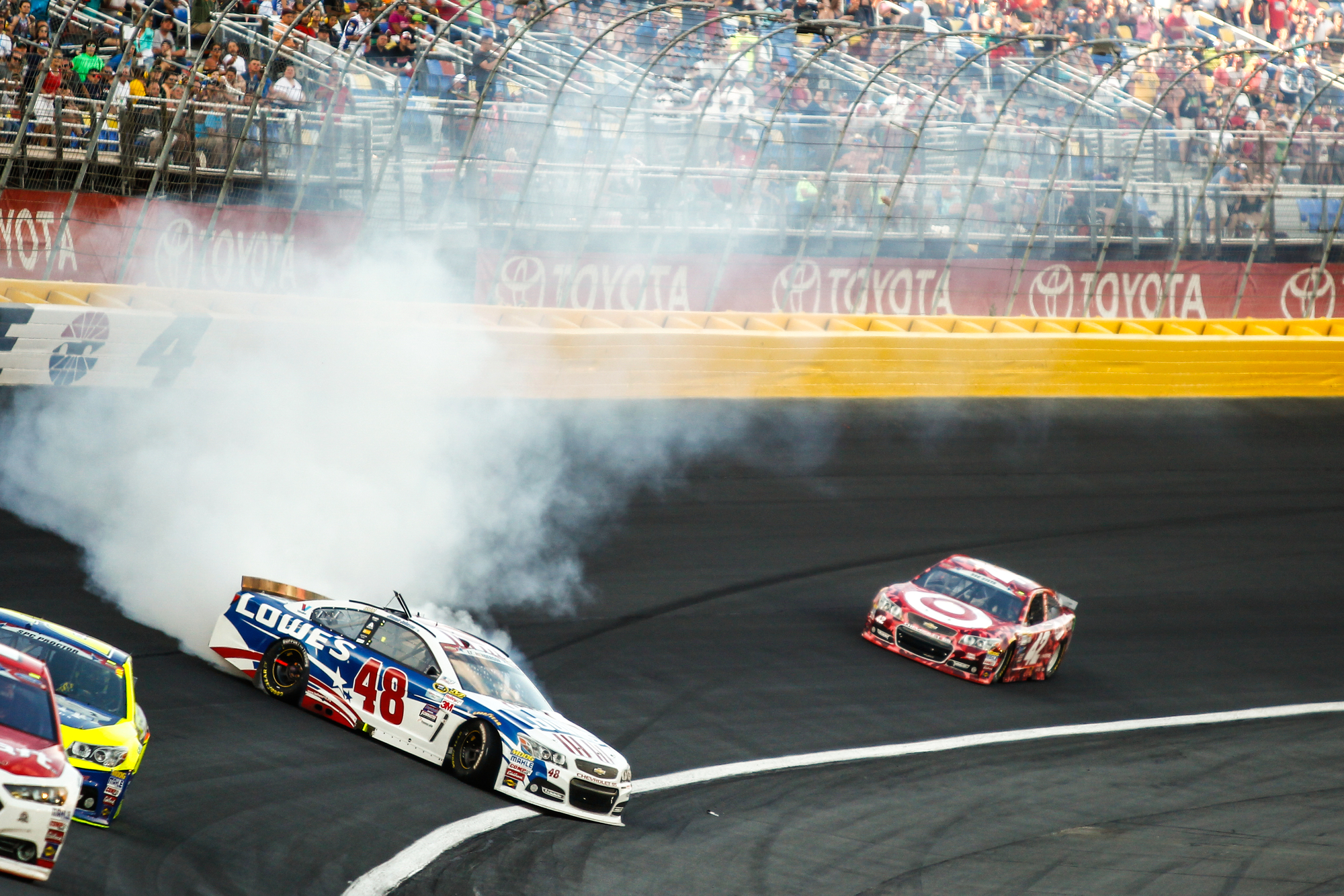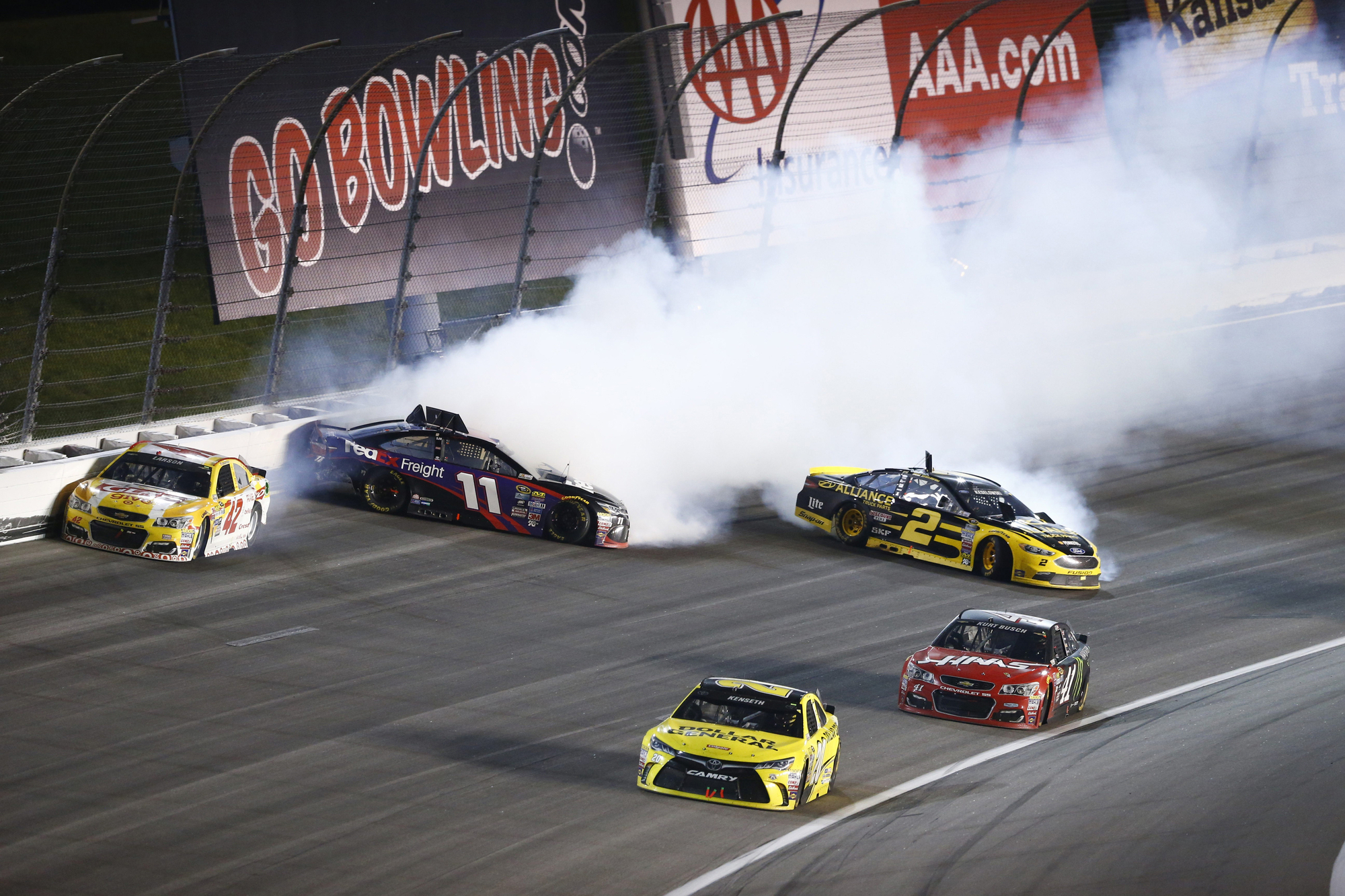NASCAR stock cars zooming at 200 mph looks easy on the TV screen, but each race has opportunities for danger. While the sport has become safer in the last few decades, drivers and crew members still get hurt. When injuries happen, health and safety regulators get involved. When has the Occupational Safety and Health Administration (OSHA) had to intervene with NASCAR? What safety enhancements have aided crews in the world’s premier stock car league?
History of NASCAR’s Run-Ins With OSHA
A lot can go wrong when driving in a NASCAR stock car, whether you’re part of the Cup, Xfinity, Truck or ARCA Menards Series. However, these drivers are professionals who have years of training and experience with thousands of miles logged. NASCAR’s governing body and the individual teams run tight ships with detail-oriented crew members servicing the vehicle. Safety is as high a priority as speed, and compromising either could mean you lose your job.
Ultimately, NASCAR is a business within the automotive industry. Drivers, crew chiefs, engineers and more are race team employees who must follow OSHA guidelines to ensure a safe work environment.
In February 2004, OSHA intervened after a track employee died at Daytona International Speedway during a Dash Series Race. While the race was under caution, Roy H. Weaver collected debris on the track when a car struck him. Weaver entered the speedway during the caution period, and the driver could not stop before colliding with him.
OSHA opened an investigation the next day and ultimately determined the track was at fault. Investigators said Daytona International Speedway should have improved its methods for track workers being on the speedway during a race. OSHA fined Daytona International Speedway $16,050 for infractions related to and unrelated to Weaver’s death.

What OSHA Regulations Must NASCAR Comply With?
OSHA’s reach goes far and wide in the American workforce, even extending to NASCAR and other motorsports organizations. You must follow the rules for OSHA group 7948 if your sport occurs on a track. This section details the regulations for track operations using horses, dogs, motorcycles and stock cars.
The rules for auto racing and greyhound racing significantly differ, so it’s worth diving in and seeing what NASCAR has to do to avoid OSHA investigations. Here are some safety features NASCAR and other racing leagues use to comply with regulations. These required procedures came from an August 2004 incident when OSHA fined Twin State Speedway in New Hampshire after a fatality at the track.
Spotters
NASCAR drivers wouldn’t be the same without spotters. These professionals are essential for helping drivers get around the track safely, whether a half-mile circuit or a long road course. Spotters talk to their drivers through the radio, navigating them through crashes and acting as their eyes and ears. OSHA says drivers need spotters to warn them of hazardous conditions.
Spotters become crucial when safety workers are on the track removing debris or tending to wrecked drivers. Your visibility as a driver is already limited, but it worsens once it becomes dark or the sun shines directly into your windshield. Your spotter tells you where to go on the racetrack to avoid the workers.
Caution Lights
When the caution comes out, the safety teams must immediately head toward the accident or debris location. The involved drivers could be hurt, so there’s no time to waste. In 2023, a terrible crash in the Coke Zero Sugar 400 at Daytona sent Ryan Preece to the hospital and left him bruised.
You’ll see race officials wave a yellow flag to indicate a caution, but flashing lights are necessary to warn drivers in any section of the track. When the driver sees yellow flashing lights, they know immediately to slow down because a hazard has appeared on another side of the track.
Pace Car
While most drivers are trustworthy, having a pace car to lead the field during caution laps is vital. OSHA recommends using a pace car to control the drivers while safety workers do their job on track. The pace car is easy to see with its flashing lights as it moves around the track. Safety workers can easily see when the pace car is coming, so they know when to be even more careful.

How NASCAR Has Progressed Safety
Complying with OSHA regulations is best for NASCAR to keep drivers safe and avoid fines. Willful violations can cost as much as $156,259 per violation, so prioritizing safety is paramount.
In 2001, NASCAR suffered one of its darkest days when Dale Earnhardt Sr. tragically died in the Daytona 500. Since that day, NASCAR has advanced safety through new cars and regulations to protect drivers and crew members. Here are a few examples of what NASCAR has done.
HANS Device
When a driver crashes, the primary concern is their skull. A wreck makes your body rapidly shake, potentially damaging your head. Many drivers have suffered concussions over the years, with some being career-ending. In the 1990s, researchers began developing a head and neck safety (HANS) device. Drivers didn’t like it at first because it felt too restrictive. However, everything changed in 2001.
Earnhardt died in 2001, but NASCAR was still reeling from the deaths of Adam Petty and Kenny Irwin Jr. Another death in late 2001 — this time in an ARCA race — led to NASCAR requiring HANS devices for the Cup, Xfinity and Truck series.
SAFER Barrier
The impact of hitting a wall at 30 mph is terrible enough — imagine hitting a concrete wall at over 150 mph. Concrete walls destroy cars and injure drivers, so NASCAR began installing steel and foam reduction (SAFER) barriers in 2002. NASCAR installed its first SAFER barriers at the Indianapolis Motor Speedway, but you’ll see them at nearly every track.
SAFER barriers are essential because they absorb the impact and dissipate the energy that stock cars bring. The driver has more protection because the impact is lower, and their vehicles are less likely to bounce off the wall and back into traffic.
Next-Gen Cars
The 2022 season saw the seventh generation of NASCAR’s stock cars. Safety is a significant priority for each generation, starting with the Car of Tomorrow 2007. While the car has improved safety, there’s still work to do. Before the 2023 season, NASCAR introduced center and rear clips to reduce the impact of crashes.
Pit Crew Sizes
Pit road sees cars driving slower than on the track, but the crews still risk danger during each stop. To minimize risk, NASCAR only permits five members over the wall during pit stops. You used to see more professionals jumping over the pit road wall, such as the catch-can holder, but their services are no longer needed.
Sizable Fines
Breaking the rules in NASCAR typically leads to fines and points penalties. While some infractions are minor, NASCAR’s governing body ensures safety violations get sizable penalties. For example, a wheel coming off means the team gets a points deduction and suspensions for the crew chief and tire changers. The crew must rigorously practice tire changing and ensure the lug nut is tight.
History of NASCAR’s Run-Ins With OSHA – Final Thoughts
Each season sees 36 NASCAR Cup Series races, with plenty more from the Xfinity, Truck and ARCA series. From February to November, there are numerous opportunities for danger. Ensuring the safety of every driver and crew member takes a massive effort from everybody involved. NASCAR has only had one issue with OSHA, and avoiding further run-ins will require nothing short of excellent communication and continued safety advancements.
History of NASCAR’s Run-Ins With OSHA – Frequently Asked Questions
Is NASCAR safer than F1?
NASCAR stock cars have a roof to protect the drivers’ heads, unlike F1. This aspect is why many in the racing community say NASCAR is safer than F1.
What is the penalty for losing a wheel in NASCAR?
Before the 2023 season, NASCAR slightly loosened the penalty for a lost wheel. Now, the crew chief only serves a suspension if the wheel comes off while on pit road.
Who was the last NASCAR driver to die in a race?
Dale Earnhardt Sr. was the last driver to die during a NASCAR race, prompting the sport to change its safety policies radically.
How do pit crew members get hurt?
Each pit road spot is tight, forcing the crews to work in narrow spaces. Entering and exiting cars can accidentally hit crew members and knock them to the ground.
How hard is NASCAR on the body?
Being a NASCAR driver or pit crew member is physically and mentally demanding. Each team must prioritize training and conditioning to meet the physical demands. Plus, you must account for the risk of injury. Some accidents have forced drivers and crew members to retire early.
Author Bio
With an extensive background in automotive journalism, Jack Shaw brings a wealth of knowledge and enthusiasm to the table. As a contributing writer for Offroad Xtreme, Ford Muscle, Engine Labs and other leading publications, his articles provide readers with expert insights and captivating stories from the world of racing.
